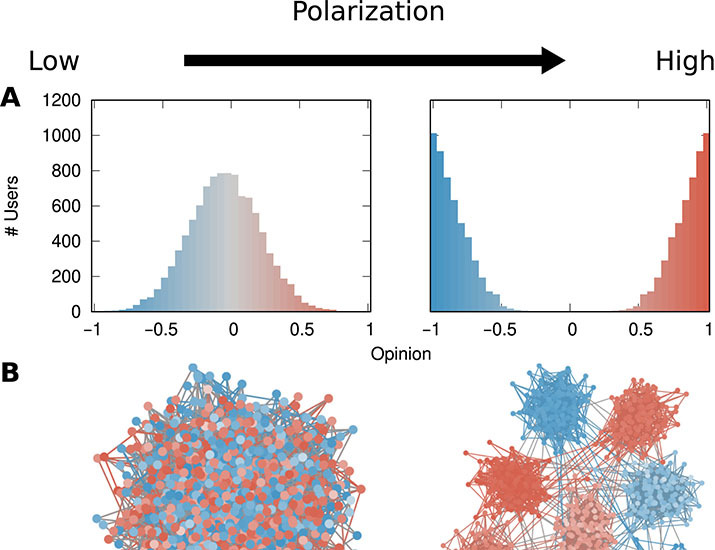- Record: found
- Abstract: found
- Article: found
Quantifying ideological polarization on a network using generalized Euclidean distance

Read this article at
Abstract
An intensely debated topic is whether political polarization on social media is on the rise. We can investigate this question only if we can quantify polarization, by taking into account how extreme the opinions of the people are, how much they organize into echo chambers, and how these echo chambers organize in the network. Current polarization estimates are insensitive to at least one of these factors: They cannot conclusively clarify the opening question. Here, we propose a measure of ideological polarization that can capture the factors we listed. The measure is based on the generalized Euclidean distance, which estimates the distance between two vectors on a network, e.g., representing people’s opinion. This measure can fill the methodological gap left by the state of the art and leads to useful insights when applied to real-world debates happening on social media and to data from the U.S. Congress.
Abstract
Abstract
A previously unknown measure for estimating ideological divergence in social networks is used to study polarization.
Related collections
Most cited references75
- Record: found
- Abstract: found
- Article: not found
Modularity and community structure in networks
- Record: found
- Abstract: not found
- Article: not found
